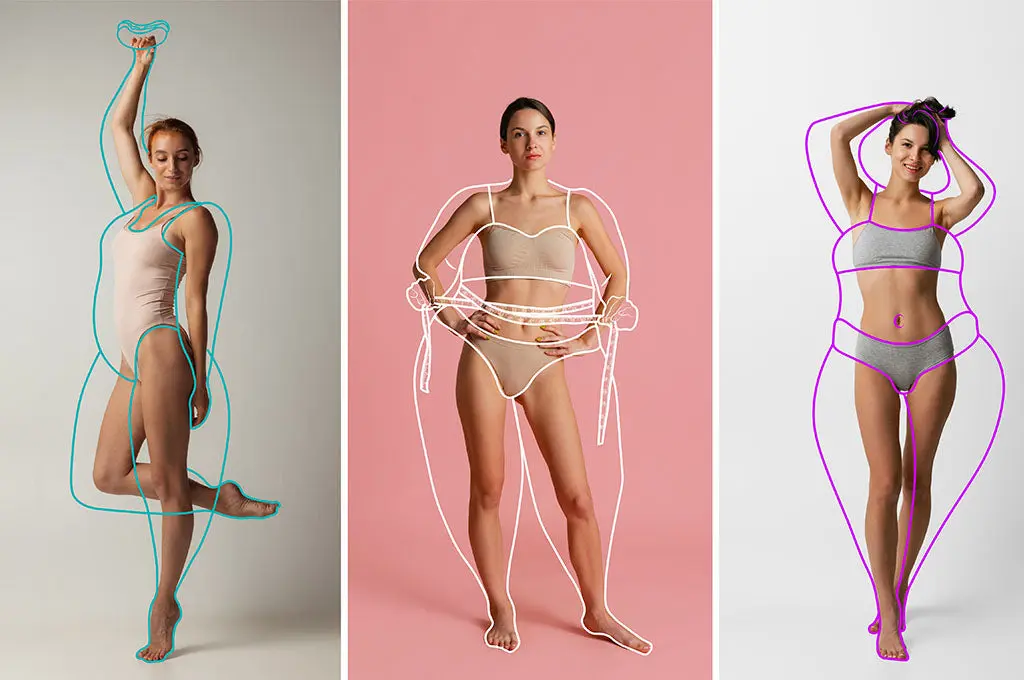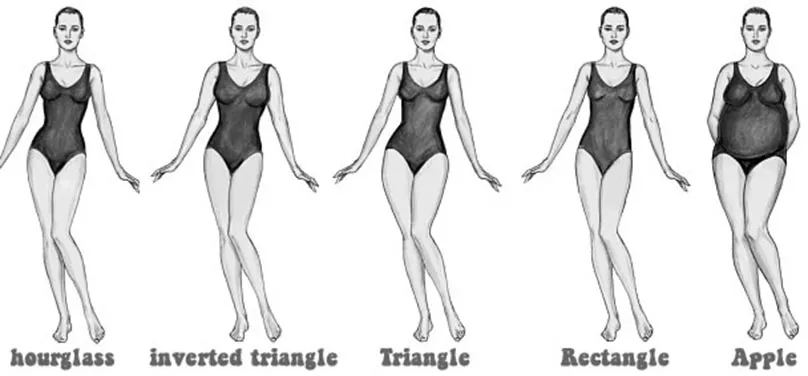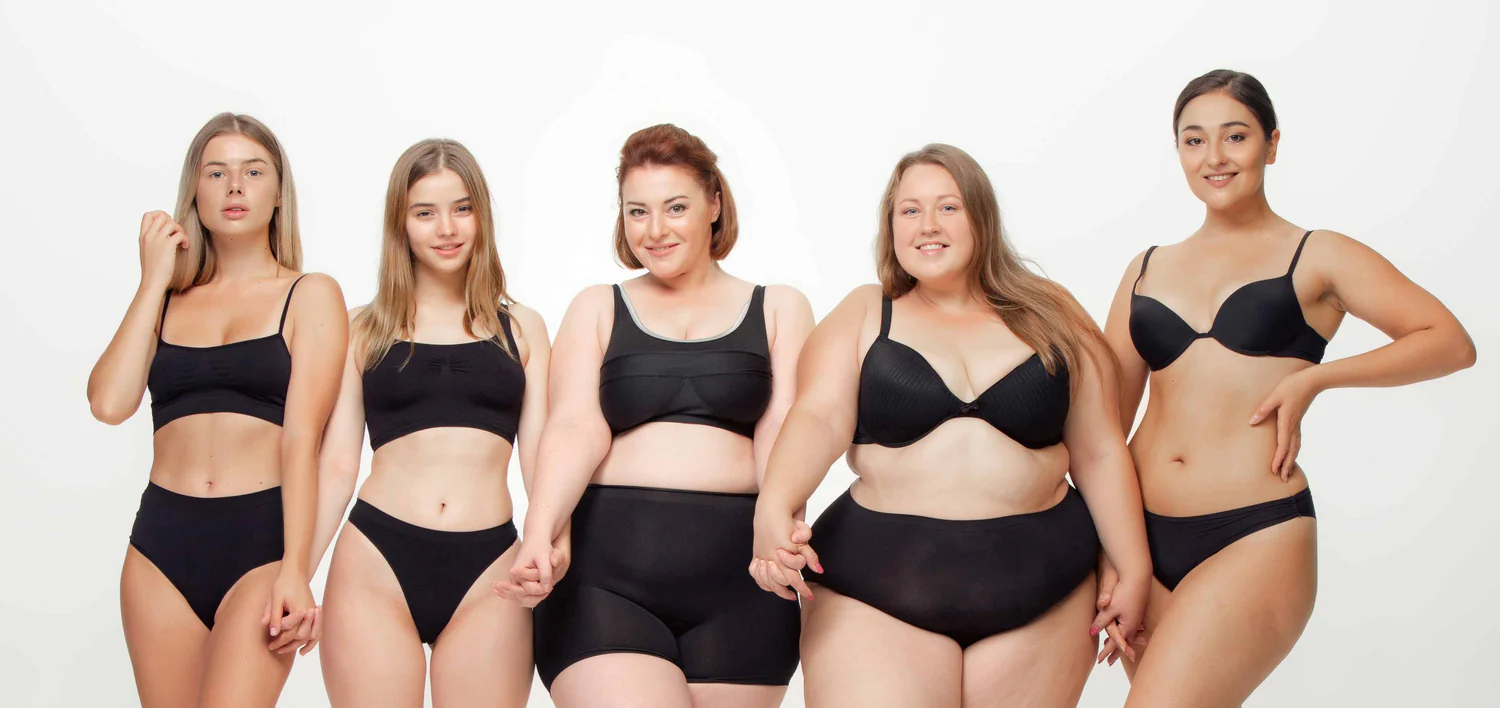To know your body type is crucial for effective fitness and nutrition planning. There are three main body types: ectomorph, mesomorph, and endomorph. Ectomorphs are typically slim with a fast metabolism, mesomorphs have a muscular build, and endomorphs tend to store fat easily. By identifying your body type, you can tailor your workouts and diet to optimize results. Today we will find out how to know your body type and the best strategies for achieving your fitness goals based on it.

How To Know Your Body Type?
There are two main ways to know your body type: using body composition (mostly genetics) and body shape (visual assessment).
Contents
Body Composition (Somatotypes):
This system categorizes body types based on muscle mass, bone structure, and tendency to gain fat. These are:
- Ectomorph: Lean and lanky build, struggles to gain muscle or fat.
- Endomorph: Rounder physique, tends to gain fat easily, and may lose muscle quickly.
- Mesomorph: Athletic build, gains muscle easily, and loses fat relatively easily.

It’s important to note:
- This system is a simplification and most people are a mix of these types.
- Focus on health and fitness goals rather than fitting neatly into a category.
Body Shape:
This method involves looking at the proportions of your body, particularly the bust, waist, and hips. Here are the common body shapes:
- Apple: Carries weight in the midsection, with shoulders wider than hips.
- Pear: Hips wider than shoulders, weight tends to gather in the lower body.
- Hourglass: Balanced bust, waist, and hips with a defined waistline.
- Rectangle: Straight up and down figure with minimal waist definition.
- Inverted Triangle: Broad shoulders and bust with narrower hips.

Here’s how to determine your body shape:
- Take measurements: Measure your bust (the fullest part of the chest), waist (the narrowest part of the torso), and hips (the widest part of the buttocks).
- Compare measurements:
- Notice the largest and smallest measurements.
- For example, an hourglass shape will have a bust and hip measurement closer in size with a significantly smaller waist.
- Look in the mirror: Observe the overall silhouette. Does your waist naturally define your curves, or do your shoulders or hips stand out more?
Here’s What Your Body Type Says About You
Your body type can provide valuable insights into your metabolism, muscle composition, and how you respond to exercise and nutrition. Here’s what each body type typically indicates:

1. Ectomorph:
- Metabolism: Fast metabolism, making it challenging to gain weight.
- Muscle Composition: Lean muscle mass with lower body fat.
- Exercise Response: Responds well to endurance training but may struggle to build muscle.
- Nutritional Needs: Requires a higher calorie intake to support energy needs and muscle growth.
2. Mesomorph:
- Metabolism: Moderate metabolism with efficient muscle gain and fat loss capabilities.
- Muscle Composition: Naturally muscular with a balanced body fat percentage.
- Exercise Response: Excels in strength and muscle-building exercises.
- Nutritional Needs: Benefits from a balanced diet focusing on protein, healthy fats, and complex carbohydrates.
3. Endomorph:
- Metabolism: Slower metabolism, making it easier to gain weight and store fat.
- Muscle Composition: Higher body fat percentage with a tendency to carry weight in the midsection.
- Exercise Response: Benefits from a combination of strength training and cardio to promote fat loss.
- Nutritional Needs: Requires portion control and a focus on nutrient-dense foods to manage weight effectively.

How to Improve Your Body Composition?
Improving your body composition involves reducing body fat percentage while increasing lean muscle mass. Here are key strategies:
-
Strength Training: Incorporate resistance exercises to build muscle and boost metabolism.
-
Cardiovascular Exercise: Include aerobic activities like running or cycling to burn calories and improve heart health.
-
Balanced Diet: Consume a diet rich in lean protein, fruits, vegetables, and whole grains while limiting processed foods and added sugars.
-
Calorie Control: Monitor calorie intake and aim for a slight deficit to promote fat loss while preserving muscle mass.
-
Hydration: Stay hydrated to support metabolic function and performance during workouts.
-
Adequate Sleep: Ensure 7-9 hours of quality sleep per night to support recovery and hormone regulation.
-
Consistency: Maintain a consistent exercise routine and healthy eating habits for sustainable results.
-
Progressive Overload: Continuously challenge your muscles by increasing weights or intensity to stimulate muscle growth.
Frequently Asked Questions
What role does understanding your body type play in health and fitness?
Understanding your body type helps tailor fitness and dietary needs effectively, considering individual factors like frame size and weight history. By embracing your individuality, you can make targeted lifestyle changes that result in a significant impact on body composition improvement.
How does maintaining a positive mindset contribute to health?
A positive mindset towards your body promotes self-acceptance and encourages healthier habits. This positivity can lead to more consistent exercise, better food choices, and improved mental health, all of which contribute to overall well-being.
What can substantially impact body composition improvement?
Consistent physical training and dietary changes can significantly impact body composition improvement. These changes, tailored to your unique body type and needs, can improve your health, and fitness levels, and lead to a more active lifestyle.

Hello, I’m Ravindra. Over the years, I’ve immersed myself deeply into the world of fitness and health, transforming both my body and mind. Writing has allowed me to share my journey, insights, and expertise with those just starting out and seasoned fitness enthusiasts alike. Beyond just routines and diets, I believe in inspiring others to adopt a holistic approach to well-being.
